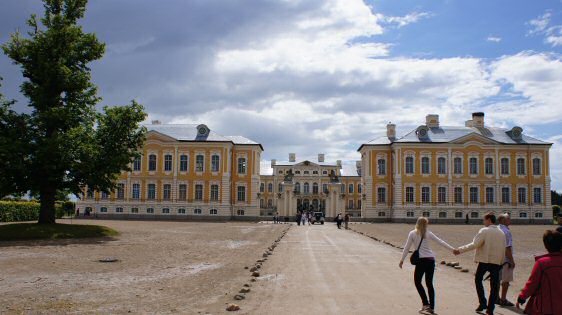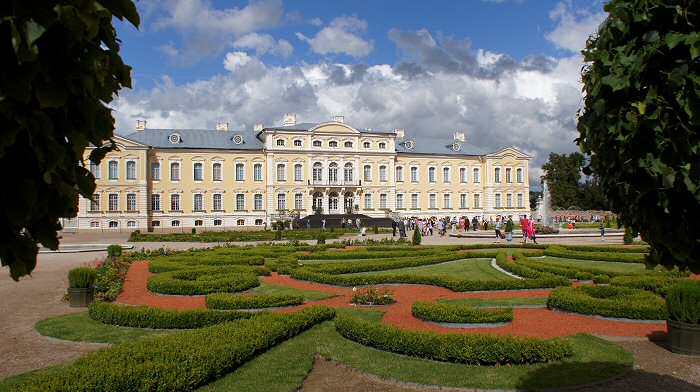The construction of the castle was ordered by the Russian Tsarina Anna Ivanovna. It was to serve as the summer residence of Duke Ernst Johann Biron of Courland. The Russian-Italian architect and master builder at the Tsar's court Bartolomeo Francesco Rastrelli, who had already drawn up the plans for the Winter Palace in St. Petersburg, was commissioned with the design. The foundation stone was laid in 1735, and construction work initially lasted until 1740. The palace park was also laid out in the French style according to Rastrelli's specifications and planted with 328,185 linden trees. Biron only used the palace for three years, as he was exiled to Siberia after the death of Tsarina Anna. It was not until Tsarina Catherine II took power that Biron was able to return to Courland. Between 1763 and 1768, construction work was again carried out on the palace and above all the interior decoration was completed. The design of the interiors was in the hands of the Italian painters Francesco Martini and Carlo Zucchi, who were based in St. Petersburg, and the Berlin sculptor Johann Michael Graff. After Biron's death, his son Peter von Biron used the palace until 1795, after which the Tsarina gave it to her favourite Count Valerian Zubov. Peter von Biron had already disposed of most of the inventory. Later the castle came into the possession of the Shuvalov family. As part of the Latvian agrarian reform, the castle, which had been damaged in the First World War, was expropriated in 1920 and became the property of the Latvian state. Flats and a primary school were established in the buildings. In 1933 it was handed over to the Latvian Historical Museum and some renovation work was started. Rundāle's exterior survived the Second World War undamaged, but it was used as a granary in the post-war years, and thus much of the valuable interior decoration perished. In 1972, the Rundāle Castle Museum was founded and extensive restoration work began.
Source: Wikipedia




In a room with a myriad of family pictures, a painting by Winterhalter caught our eye. The German painter also produced the famous paintings of Emperor Franz Joseph and Sisi (Vienna, Hofburg, Sisi-Museum).

F. X. Winterhalter: Countess Olga Esperovna Shuvalova (1838-1869). The castle was last owned by the Shuvalov family.

The end of our visit to the baroque Rundale Castle was a walk through the baroque garden. For a brief moment the sun shone on the castle!

